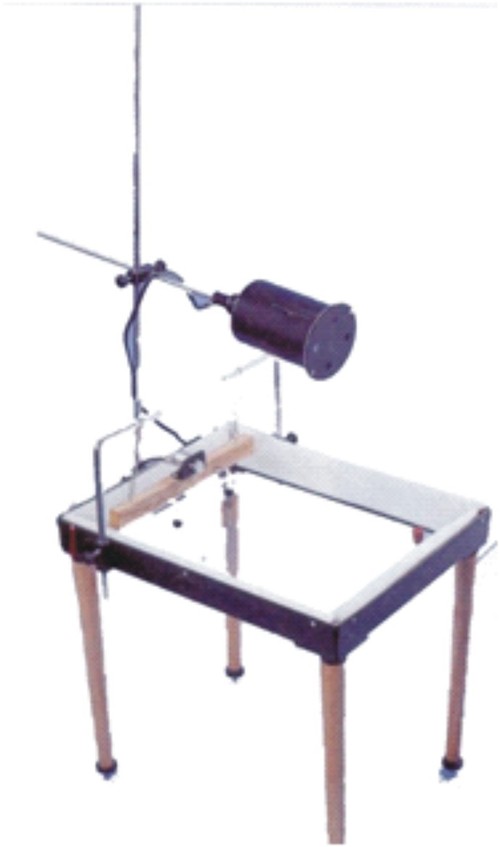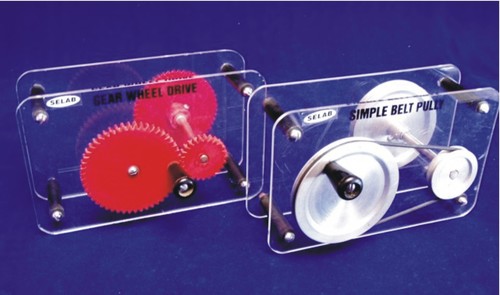MICHALSONS INTERFEROMETER
MICHALSONS INTERFEROMETER Specification
- Frequency
- Light source: Sodium lamp (589nm), monochromatic line
- Feature
- High sensitivity, Adjustable path difference, Stable platform
- Voltage
- Lamp: 220V AC
- Capacity
- Standard laboratory setup
- Core Components
- Beam splitter, Mirrors, Adjustable stage, Optical mounts
- Temperature Range
- Ambient (typically 10C to 40C)
- Measurement Range
- Fringe shift up to several millimeters
- Accuracy
- Measurement accuracy up to 0.001 mm
- Automation Grade
- Manual
- Equipment Materials
- Optical glass, Stainless Steel, Aluminium
- Type
- Optical Interferometer
- Usage
- Precision measurement of wavelength, refractive index, small displacements
- Dimension (L*W*H)
- 450 mm x 250 mm x 180 mm
About MICHALSONS INTERFEROMETER
To Determine the wavelength of Sodium Light/Laser Light using Michalson Interferometer with arrangement to micro measure Highly polished plane slabs placed parallel at 45 and mirrors are placed right angle. Laser light with power supply fitted. Fringes formed are easily visible on wall or paper.Precision Measurement Capability
Designed for high sensitivity, the Michelsons Interferometer facilitates accurate analysis with adjustable optical path lengths and fine micrometer controls. Its standard laboratory configuration allows for precise determination of small displacements, wavelength calibrations, and refractive index measurements within a controlled range.
Stable and Secure Laboratory Operation
Crafted from robust optical glass, stainless steel, and aluminium, the equipment features a shock-absorbent base and secure optical mounts. These safety features ensure reliable operation while mitigating risk of accidental damage, making it ideal for repeated laboratory experiments and measurements.
Versatile Optical Compatibility
Supplied with a compatible lamp holder, the interferometer accommodates sodium lamps (589 nm) and other monochromatic sources, providing flexibility for a range of optical experiments. Its precision linear translating stage and 25 mm diameter optics further enhance adaptability for custom laboratory setups.
FAQs of MICHALSONS INTERFEROMETER:
Q: How does the adjustable optical path length benefit experimental measurements in the Michelsons Interferometer?
A: The adjustable optical path length, stretching up to 50 mm, enables researchers to finely calibrate the interferometer for a wide variety of experiments, facilitating the measurement of minute distances and enabling tailored setups to match specific measurement needs.Q: What process is used to measure the refractive index with this interferometer?
A: To measure the refractive index, a sample material is inserted into the beam path, and the resultant fringe shift is observed. The interferometers fine micrometer screw allows accurate adjustment and measurement, providing refractive index readings in the range from 1.0 to 2.0.Q: When is the Michelsons Interferometer typically used in laboratory settings?
A: This device is utilized during precision experiments involving wavelength determination, refractive index evaluation, and analysis of small mechanical shifts, making it essential for research and educational labs where optical accuracy is paramount.Q: Where can the Michelsons Interferometer be installed for optimal results?
A: It is designed for use on stable laboratory benches within ambient temperature ranges from 10C to 40C, ensuring that both equipment operation and measurement accuracy are maintained under standard research conditions.Q: What safety features are included in the Michelsons Interferometer for laboratory use?
A: For enhanced safety, the interferometer incorporates a shock absorbent base and secure optical mounts. These features effectively help prevent damage from accidental knocks, ensuring both user safety and the integrity of precise optical alignments.Q: How is the device powered, and what lamps are compatible for measurements?
A: The Michelsons Interferometer lamp operates on 220V AC, and the included lamp holder supports sodium lamps emitting the 589 nm monochromatic line, along with other suitable monochromatic lamp types for specific experimental requirements.Q: What are the main benefits of using the Michelsons Interferometer in research and academic laboratories?
A: Key benefits include high measurement accuracy up to 0.001 mm, manual adjustability for customized analyses, stable and secure design for repeatable results, and versatile compatibility with monochromatic light sources, making it a valuable asset for precision optical explorations.

Price:
- 50
- 100
- 200
- 250
- 500
- 1000+
More Products in PHYSICS LABORATORY EQUIPMENT Category
RIPPLE TANK
Weight : Approximately 5 kg
Equipment Materials : Metal wood and glass
Usage : Educational purposes in wave mechanics
Automation Grade : Manual
Feature : Demonstrates wave properties like reflection refraction and interference
Type : Physics demonstration equipment
MECHANICS SET
Weight : Not Available
Equipment Materials : Metal and Plastic
Usage : Laboratory
Automation Grade : Manual
Feature : Highly Efficient
Type : Mechanics Set
Wimshurst Electrostatic Generator
Weight : Approx. 57 kg
Equipment Materials : Polished Hard Wood, Brass, Glass Plates
Usage : Laboratory
Automation Grade : Manual
Feature : Highly Efficient
Type : Electrostatic Generator
Gear & Pulley Set
Weight : Approx. 500 g (Set)
Equipment Materials : Metal (Steel/Aluminium Alloy)
Usage : Laboratory
Automation Grade : Manual
Feature : Highly Efficient
Type : Gear & Pulley Set
GST : 06ACOPS0805K1ZD
|
 |
SINGHLA SCIENTIFIC INDUSTRIES
All Rights Reserved.(Terms of Use) Developed and Managed by Infocom Network Private Limited. |


 Send Inquiry
Send Inquiry





